Extended Producer Responsibility for Lighting Equipment
Extended Producer Responsibility for Lighting Equipment
Lighting (bulbs, lamps, etc.) creates hazardous waste that can’t be discarded with household rubbish. Instead, it must be treated and recycled. To facilitate this process, South Africa introduced extended producer responsibility (EPR) regulations in 2020.
What is EPR (Extended Producer Responsibility)?
EPR is a waste management principle that holds producers liable for the waste their product creates. South Africa has had EPR regulations since 2020. Under the EPR regulations, producers must provide eco-friendly disposal methods for their products after consumers have used them. For example, a lightbulb manufacturer must set up a recycling program for used bulbs.
EPR Requirements for Lighting Equipment
The EPR regulations for lighting equipment require all producers to set up an extended producer responsibility scheme. Such a scheme must include measures for:
- Collection of lighting waste from consumers
- Reuse of durable elements where applicable
- Recycling of metals, plastics, and other valuable materials
- Recovery of useful resources from waste
- Refurbishment of old light fittings for resale or reuse where applicable
- Disposal of lighting products in an eco-friendly manner
Notably, the EPR scheme must include the entire value chain. Thus, raw material suppliers, importers, and manufacturers must collaborate to fulfil their EPR obligations. The law also mandates reporting to the South African Waste Information System.
Types of Lighting Waste Covered by EPR
The EPR regulations cover all types of lighting equipment, with specific mention of the eight classes below. The law provides collection, recovery, and recycling targets for these lighting products, which must be tracked and reported on an annual basis. Read our in-depth page about the environmental effects of each lighting type.
- Gas discharge lighting
- Light-emitting diodes (LEDs)
- Signal and signage lighting
- Luminaires
- Laser, pixel and ultraviolet lights
- Automotive lights
- Incandescent and halogen light bulbs
- Off-grid solar powered lights
EPR Lighting Types Explained
Gas discharge lighting
Gas discharge lighting creates illumination by sending electric current through a gas-filled tube. Fluorescent lights and CFLs are good examples – these contain a mix of mercury vapour and argon gas. Another example is neon signage lighting containing neon gas. In settings that require extremely bright light, you may find high-intensity discharge lamps (HIDs) filled with xenon.
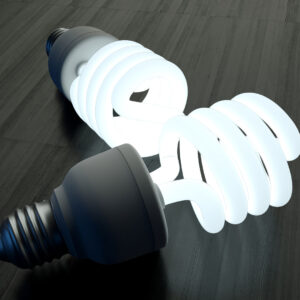
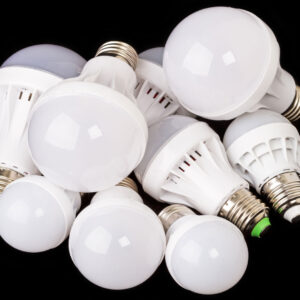
Light-emitting diodes (LEDs)
LEDs are electronic components that emit light when electricity passes through them. They are highly energy efficient and are fast becoming the preferred lighting type for household use. LEDs contain chemical elements like gallium, indium, nitrogen, and phosphorus.
Signal and signage lighting
The EPR regulations cover all lighting elements used in traffic lights, emergency signage, commercial billboards, and other signals and signs. These lights are often LED-powered, but may also contain halogen bulbs or neon elements.
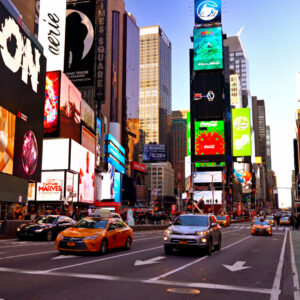
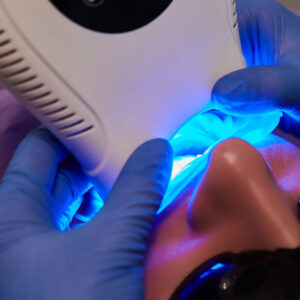
Laser, pixel and ultraviolet lights
Lasers are typically found in manufacturing and scientific settings. They produce concentrated beams of light that can be used for cutting, engraving, or reading physical data. Pixel lights, on the other hand, are most commonly found in signage displays. Ultraviolet lights and UVGI produce “black light” that is not visible to the naked eye.
Automotive lights
All car lighting is covered by extended producer responsibility. Producers of head lights, indicators, and dashboard signals must follow an EPR scheme. Where vehicle lighting elements contain a mix of LEDs and gas discharge lighting, each waste stream must be recycled separately.
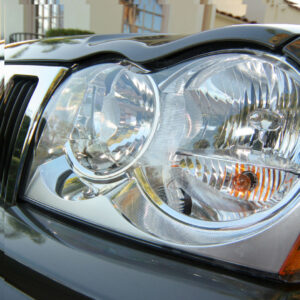
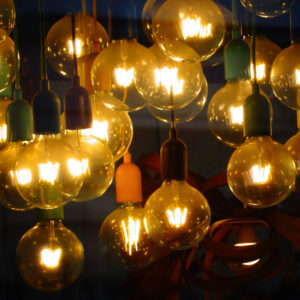
Incandescent and halogen light bulbs
Incandescent lights are the “traditional” light bulbs that contain a metal filament. This filament gets very hot when plugged in and glows bright to produce illumination. All filament light bulbs are subject to EPR and must be recycled accordingly.
Off-grid solar powered lights
Solar-powered lights contain unique components such as PV cells and batteries. The lighting elements themselves are typically made from LEDs. Solar lighting manufacturers and importers must join an EPR scheme to maintain compliance in South Africa.
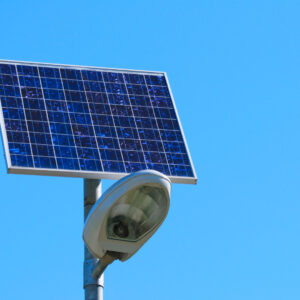
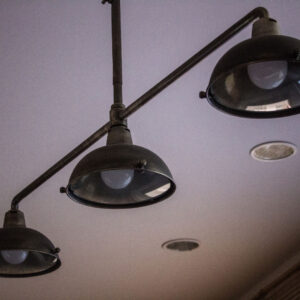
Luminaires
A luminaire is the technical term for an entire light fitting encompassing all elements of the lamp, including its circuitry and housing. The EPR regulations make specific mention of luminaires to draw attention to the fact that lighting equipment is not just the bulb itself, but the entire fixture.
EPR Waste Association of South Africa
Environmentally Sound
Waste Management
Joining eWASA puts a leading environmental services association in your corner. We help you set up recycling systems for your products to ensure complete EPR compliance for your business. As a member, you join our professional community and gain access to networking events, educational resources, and participation in environmental lawmaking.
Which Parts of the Light are Covered by EPR?
The official definition of lighting equipment under EPR includes “peripherals of the lighting bodies” which refers to all lighting components and accessories, not just the light bulb itself. Under the law, producers are required to recycle all the elements that make up a lighting unit.
- Switches and dimmers
- Wiring and insulation
- Ballasts (protects the light from surges)
- Casings – may be made from metal, plastic, wood, etc.
- Mounting hardware, such as brackets with screws or bolts
- Reflectors and diffusers designed to scatter or soften light
- Light sockets (hold the bulb in place)
The Difference Between Lighting Waste and e-Waste in EPR
Both lighting and e-waste are covered by EPR in South Africa. However, e-waste falls under separate regulations, which are specific to electrical and electronic equipment (EEE).
- E-waste is a broad category that includes all devices that run on electricity.
- Lighting is a subcategory of e-waste. It only covers devices made for artificial light generation.
Appliances, computers, power tools, and hair dryers become e-waste at the end of their lifecycle. Even when these devices have lighting elements, such as pilot lights, they are still considered EEE. That’s because they are designed with specific functions in mind, while lighting equipment is designed solely for illumination.
Producers that sell both lighting equipment and EEE must register for two separate EPR schemes. eWASA handles EPR reporting and compliance for both sectors and can assist with waste separation. Please contact us for more information.
How to Fulfil EPR Obligations as a Lighting Producer
The goal of extended producer responsibility is to make the lighting industry less wasteful at all stages. All lighting producers must take the following actions:
- Register as producers with the Department of Forestry, Fisheries, and the Environment.
- Join an existing EPR scheme or establish their own.
- Report to SAWIS on waste generation vs recovery every year.
All EPR schemes must be producer-funded. That means setting up a system for collecting EPR fees and auditing how they are allocated. These fees should cover the admin costs of running the scheme and the material costs of collection and recycling.
Making Lighting Products More EPR Friendly
EPR is not only about recycling lighting waste. It’s also about cleaner production and green design that makes lighting eco-friendly from the get-go. Practical measures to take include:
- Conducting life cycle assessments to understand the product’s environmental impact.
- Reducing energy and water consumption during production.
- Making lamps and bulbs more energy efficient.
- Choosing designs that are easy to disassemble and recycle.
- Using recycled materials in the lamp design.
Why is EPR for Lighting Waste Important?
Having an EPR system in place for the lighting sector can be beneficial for the environment and the economy. It encourages recycling and waste beneficiation and contributes to the circular economy. Here are two major benefits of EPR for lighting equipment.
1. Prevents environmental harm
Many lighting products contain toxic substances that can damage ecosystems when sent to dumps and landfills. For example, a CFL bulb contains small amounts of mercury vapour. In large quantities, mercury begins to pollute the soil and water. EPR promotes recycling, which is a much safer disposal method for hazardous substances.
2. Preserves precious resources
The metal, glass, and plastic found in light bulbs and lamps can be recycled and reused to create new lighting products. This reduces our reliance on finite virgin materials. EPR encourages investment in recycled materials, which creates new economic markets and supports entrepreneurship.
Lighting Waste Recycling Targets in South Africa
The lighting equipment regulations provide recycling targets for years one through five of running an EPR scheme. These targets are set by the Department of Forestry, Fisheries, and the Environment. Each type of lighting waste has a unique target for collection, recovery, and recycling.
- Collection – how much lighting waste did your EPR scheme collect?
- Recovery – how much valuable material could you extract from that waste?
- Recycling – how much of the waste was recycled into new materials?
Lighting producers should report to the Department on their progress towards these targets. If the targets are not being reached, steps should be outlined on how the producer plans to improve their performance. The goal is to maintain accountability and monitor the success of EPR.
How to Increase Collection and Recycling Rates
- Set up take-back schemes for light bulbs and fittings
- Tap into the existing recycling network by working with waste pickers
- Put less waste material on the market by choosing minimalist designs
- Choose lamp materials that retain their quality and value once recycled
Long-Term Benefits of EPR for Lighting Producers
Producers have a lot to gain when they start implementing EPR for lighting equipment. Waste management becomes easier and the industry experiences more innovation and growth. EPR systems that focus on recycling lighting waste create an influx of secondary materials (i.e.: recycled materials) that can boost the manufacturing sector.
This in turn creates jobs and increases the spending power of consumers, which is a win for local lighting brands. As environmental policy evolves, early adopters of EPR will have the advantage. Brands can use it to build credibility and a loyal customer base rooted in sustainability.
Overcoming Common Challenges of EPR Compliance
Despite the many advantages of EPR, maintaining compliance can still be challenging. Many producers, especially smaller ones, run into issues that can set back their progress.
- Financial concerns around funding an EPR scheme
- Lack of support from other value chain members
- The admin burden of running an EPR scheme
- Limited knowledge and access to resources
- No formal waste collection and recycling infrastructure
Overcoming these challenges is crucial for successful EPR implementation. One of the best ways to do this as a lighting producer is to join a PRO (producer responsibility organisation) that can help you launch, fund, and manage an EPR scheme from start to finish.
Joining a Producer Responsibility Organisation
A producer responsibility organisation (PRO) is a not-for-profit company that helps producers run EPR schemes and maintain EPR compliance. They offer the following services to producers in exchange for a membership fee.
- Drawing up the EPR scheme with details on waste collection, recycling, etc.
- Securing partnerships with waste companies and municipalities.
- Lobbying on environmental matters on behalf of their producer members.
- Running take-back schemes for producer members.
- Monitoring waste collection and recycling targets.
- Submitting EPR performance reports to the government.
Joining a PRO is the easiest way to maintain EPR compliance as a lighting producer. The process is quick and generally available online or over the phone.
Join the eWASA PRO for Lighting Equipment
eWASA is a registered PRO for lighting equipment. Our EPR scheme gives producers access to a network of accredited recyclers across the country to help with collection, recycling, and reporting. We also host working groups and webinars for our members, keeping you in the know on the latest environmental laws that affect the lighting industry.
Join the eWASA PRO to start recycling lighting waste and building a sustainable business today. For more information, please get in touch.